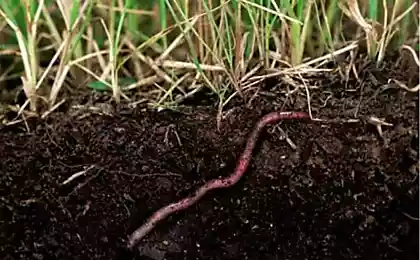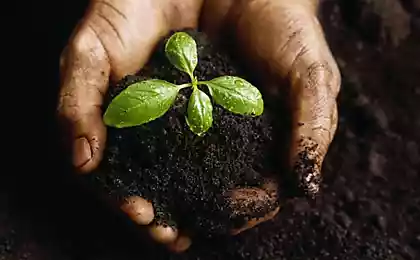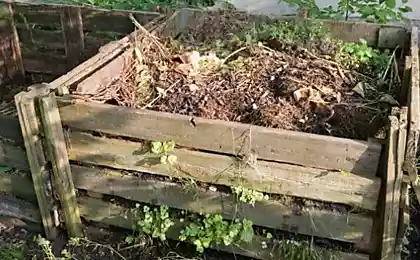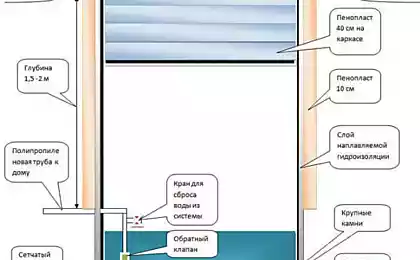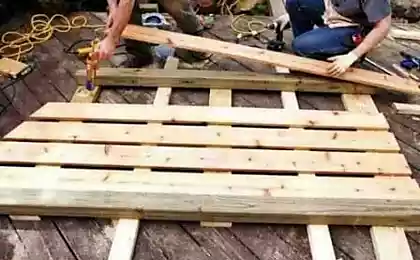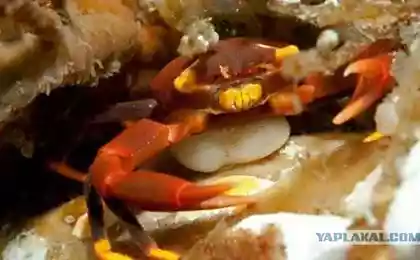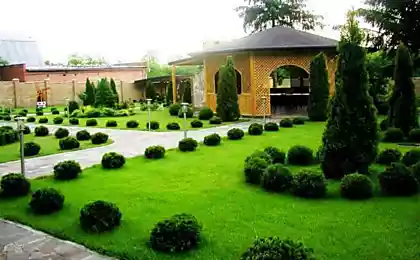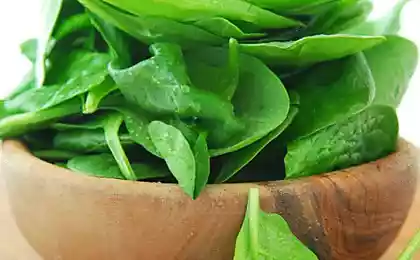521
Earthworms in the country — a source of vermicompost
Worms recycle organic matter — manure or compost much faster and more completely than the soil micro-organisms in the composting process. Absorbing together with the soil, a huge amount of plant remains, protozoa, nematodes, microbes, fungi, algae, earthworms digest them, highlighting together with coprolites (a handful of earth worms to be allocated) a large amount of humus, their own microflora, amino acids, enzymes, vitamins and other biologically active substances which suppress pathogenic microflora.
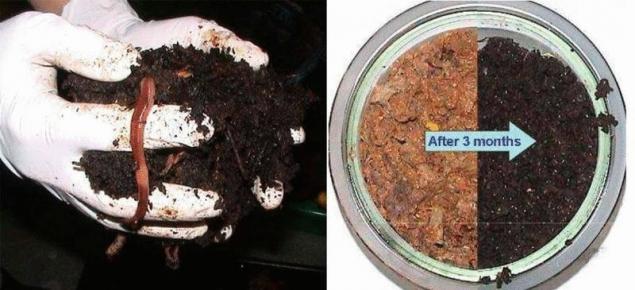
This organic weight losing smell, obezzarazhivatelya, acquires a granular form and pleasant smell of earth. Another unique capability of worms is their ability to meliorate and structure the soil, penetrating her with his moves.
Habitat of worms.
Nitrogen. Very great need worms in nitrogen-containing organics. In a rich nitrogen substrate velocity growth and fecundity of worms dramatically increase.
Humidity. Especially important for the life of the worms is sufficient moisture. Humidity below 30-35% of their slow development, and at a humidity of 22% of them die within weeks. When growing worms is optimal humidity 70-85%, i.e. close to the water content in the body of the worm.
Acidity. In an environment with acidity below pH 5 or above pH=9, all the worms die within weeks. Optimal for the worms is a neutral environment with pH=7.
Temperature. As a rule, at the temperature of +5°C worms the intestines and release do not eat. They go into the deeper layers of the soil and flow into "hibernation". In the spring the worms Wake up for 1.5-2 weeks before thawing of the soil (the disappearance of the frozen layer).
Samaleret. Salt concentration greater than 0.5% is fatal to worms. However, worms tolerate high concentrations of calcium carbonate, iron carbonate, aluminum sulphate, ferric chloride.
Fertility. Each Mature individual lays over the summer 18-24 cocoons, each of which contains 1 to 21 eggs. After 2-3 weeks from hatching yaiz new individuals, and after 7-12 weeks "babies" are able to breed. The worms live for 10-15 years, reach a length of tens of centimeters. Young Mature individuals weigh up to 1 year
Technological worms
In the United States as a result of breeding work was displayed red Californian worm. It provides 18-26 times the reproduction of local climate and 500 times in special greenhouses reproduction, while wild relatives provide 4-6 times the reproduction.
However, during the research it was found that for industrial processing of any organic waste you can use worms derived from local wild populations.
This is very important, because worms are very difficult to accustom to the new food. This is due to their biological characteristics, which is that worms are programmed to digestion of food immediately after birth, and then get used to different foods can't. Therefore, the purchase of technological worms is always a risk for the buyer. Colonization of new substrates is possible only cocoons of worms. Hatched worms nastraivatsa for processing this type of food.
Therefore, gardeners recommend the use of local worms, accustomed to the local climate, pesticides that do not contain foreign nematodes. Most of the worms, made with vermicompost into garden soil or garden dies.
Where to get worms
View worms in old manure heaps, accumulations of last year's leaves. You can collect worms when spring digging the soil. There is a way to lure the worms. In the raspberry patch, in the forest, dig a groove to a depth of bayonet spade, set back from the compost, moisten well and cover with paper or burlap, and the top put a wide Board. In 1-1,5 weeks in the groove will appear earthworms, which together with organic matter to collect in the bucket. For chervyatnike — cultivator worms need 500-1000 individuals per 1 square meter of the cultivator.
Substrate for worms
To prepare the substrate for worms use manure of cattle, swine, bird droppings. However, fresh manure is not suitable because a large amount of ammonia and chlorides. Liquid manure mixed with the same amount (by weight) of straw, hay, sawdust, etc.
Composting organic matter for the worms produced only in piles or heaps, with a height of 1.5-2 meters, but in any case not in the pits. In compostable organics should be made of complex mineral fertilizers at the rate of 1 ton of composted materials add 2-3 kg of double superphosphate, 1 kg of potassium sulphate (but not potassium chloride), 2-3 kg of ammonium sulfate, 1 kg of magnesium sulfate, 60 g of boric acid, 3-5 kg of lime or dolomite.
The collar should be well moistened (to 60% moisture) and cover with finished compost or just soil 5-20 cm in the summer or 30-40 cm in winter. The compost pile begins to heat up and after 5-7 days in summer the temperature reaches +53°C and above. At this temperature the destruction of weed seeds, helminth eggs, pathogenic microorganisms, nematodes occurs for 5-7 days, and the willingness of the substrate occurs within 45-60 days. The main criteria of readiness of the substrate is the lack of smell of ammonia.
It must be remembered that in violation of the composting process there is a mass multiplication of nematodes, and while the worms feed on the nematode, its reproduction rate is very high.
To accelerate the maturation, it is recommended to water the substrate water extract of the finished compost or vermicompost. Burt should be every 2-4 weeks to moisturize. Composting in open areas possible to a temperature not lower than -5°C.
The cultivation of the worms in the garden
Find a place in the shade of trees, under the canopy, in a shed, basement etc. in a box In an old bath, just on the ground, place a layer of compost with a thickness of 40-50 cm in the bulk soil. Moisten well. Moisture is sufficient, if a lump of compost, compressed in a fist, squeeze 1-2 drops of moisture. Size chervyatnike should not be large enough 2 square meters. Moist substrate cover with sacking or straw and let stand 5-7 days to remove residual ammonia and dissolved crystals of fertilizers.
5-7 days in the center of each square meter make a hole, in which overturn the bucket of worms are in their usual substrate. Align the surface, cover with sacking or straw and moisten the next day. In hot weather, watering like cucumbers not too cold water. The worms will gradually get used to new foods.
A week after the settlement check, pass a new worms in the substrate. If the surface is clean of worms, and they are mobile is a Testament to their well-being. If the sluggish, inactive, not trying to hide from the world — these are signs of trouble. Try to find a new population of worms from the other springs and re-plant them to the cultivator. If the worms are doing well, do not bother them for 3-4 weeks, only occasionally watering cultivator with water of ambient temperature.
Within 12-18 weeks, each worm lays a cocoon the size of half a rice grain. Each cocoon is 3-21 embryo hearts. After 2-3 weeks from the cocoons of worms appear newborns, only 4-6 mm long, which grow rapidly and at 10-12 weeks uvelichivyut mass from 1 to 250-500 mg. Usually, young worms become sexually Mature by October. During the summer season, their total mass in chervyatnike-cultivator is increased 20-50 times.
For breeding and growth of worms need a lot of food. Therefore, in the chervyatnike-cultivator is necessary to periodically add feeds by layering 15-20 cm every 2-3 weeks from early June, only 7-8 layers. Last layering to be held in late October-early November before the frost. Pile height can reach 60 cm, therefore, in order to maintain the necessary humidity, should sew up the sides with planks.
Worms are placed in the cultivator mainly in the top, "food" layer thickness of about 20 cm, This layer is removed and sportsouth to populate a new batch of substrate. The lower layers of poorly populated, and represent the vermicompost or servicenot. This is the product for which the worms are cultivated. It is screened and, if necessary, dried and placed in convenient packaging or make the beds. About using bigamous see vermicompost. During the summer season on 1 square meter of chervyatnike processed more than 1 ton of compost 50% humidity and turns out about 500 kg of vermicompost 50% humidity and 6 to 10 kg of biomass of live worms.
Preparation of worms for the winter
At the end of October-early November top, richly inhabited by worms part of the garden-cultivator is transferred to the surface of the neighboring area and covering with a layer of compost in the 40-50 cm decorate the sides with boards. This flower bed cultivator should be well protected from rodents, a metal mesh or spruce branches. Old cultivator with worms can be good to shed water, which froze, making it inaccessible to rodents.
At a temperature of 6°C worms stop feeding, at 4°C released the digestive tract and fall into a state of suspended animation. With the onset of cold they freeze, but this is not dangerous. With the onset of spring the worms become active and need food, so the substrate must be prepared in the fall. Cultured worms are very dependent on the person, and in the absence of food quietly die.
The conservation of earthworms in garden soil
Enemies of worms. Earthworms have many enemies. The most dangerous of them are moles, shrews, rats, birds, toads, frogs. The mole is one of the most dangerous enemies of earthworms, destroying many of the worms that spoil the garden. Use against him kromolowski. Among the smaller enemies earthworms can be called centipedes, moths, ants. Ants competing for food can be overcome just Perekopa their nest eggs. Centipedes simply destroy when you see it.
The main enemy of earthworms — an unreasonable man. Unreasonable actions and toxic chemicals can kill people and destroy the worms soil fertility. Proceed as follows:
Many people think that the process of breeding worms in a city apartment — it is complicated and troublesome, it is better to buy or catch on bloodworms. But how hard can it be to organize a worm farm at home? Try to understand.
Let's start with the question: what? We are all faced with the problem of storage and transportation worms for fishing. If travel is to be quite long, as a rule, this problem is solved simply: plywood box or canvas bag with raw ground, start there the worms well fed, at best, a sleep tea or just dry leaves or grass. This method helps to keep the bait in the course of a week or two, but it is not suitable for breeding worms. The box for a few months rots and falls apart, and the bag sopraval even faster. In the result, the worms crawl on the floor, and scandal, with home can not be avoided.
For storage and breeding of worms is better to use a more durable container. It can be conventional buckets or pots, as the metal — not galvanized, enameled and plastic. In selling, there are special containers for the breeding of worms in the garden plots. They are very comfortable, but you can do more simple and accessible means.
For some time I used for breeding worms that is buckets and basins. But after I got a couple aquariums from the fish, I put worms in there, and they quietly live and breed in aquariums already more than two years.
The productivity of the worms is very high. Suffice it to say that, with the total volume of the tanks with earth about 50 years, every week I can 'harvest' of earthworms in the amount of 1.5-2 liters, and while the number of 'broodstock' remains stable.
Contrary to popular belief, the land in the capacity for serverside best to lay poor in humus. The reason is simple: the worms need to be constantly fed, and the earth still will soon be enriched with nutrients. In addition, the land in which live worms, you need to mix regularly and the richer the humus, the harder it is to do it carefully enough. It is desirable that used the earth was without roots and old leaves.
It is also, as is sometimes advised, sprinkle on the bottom of the tank sand or gravel. It will only create additional complexity with stirring. In addition — and more important — sand is generally contraindicated, because grit can damage the worms digestive system.
In General, regular stirring of the earth is essential for the good health of the worms. It's not even in uniform distribution of moisture and feed to full capacity, and that worms, being limited, however, often tend to gather in a tight bunch, while highlighting specific mucus. Inside such a living tangle of fever, worsening conditions for breathing, and the worms quickly begin to die. To avoid this, it is desirable to mix the ground with my hands and when it detects such a tangle it thoroughly to shake.
Another important question — the question of power. Worms are surprisingly omnivorous and can be fed all kinds of food waste: crushed bread, the remains of various cereals, milk, yogurt, cottage cheese, use any products, as long as they were unsalted. If you have the desire to cook for worms specifically, the best option would be Hercules. Moreover, it is not necessary to brew — you can feed dry, but we must consider that dry flakes of Hercules taken at the ground moisture. So I proceed as follows: abundantly watered the earth of the 'codewalk', scatter dry oatmeal and thoroughly mix it with the ground.
You can feed the worms and the bran. Bran is now not difficult to buy, and they are much cheaper than the Hercules. But add in the ground dry leaves, as some authors suggest, not worth it. In the process of digestion leaves consume large amounts of oxygen, which is undesirable, and the process lasts long enough. Even to cover the earth in the tank leaves the top not worth it. Under foliage, the ground can dry quickly, and outside it will be unnoticed. Yes, and while stirring the leaves will get into the soil, which is also undesirable.
For 10-litre bucket of worms for a week missing 3-4 handfuls of Hercules or bran. If you in my example decide to breed worms in the large aquarium, then the amount of feed should be increased accordingly. But it is very important not to overdo it. If worms do not have time to process all the food, the remains of his quickly sour an unpleasant odor, and the atmosphere in the apartment will be broken both literally and figuratively.
The vital task is to prevent the drying of the earth. For this it is necessary to regularly moisten with water. It is very convenient to use 'cordevalle', made of ordinary plastic bottle. In traffic you need to do a dozen small holes through which the water will hit thin streams. Moisten the ground must be done very carefully — the excess moisture, and its deficiency may lead to the death of the worms.
If you feed the worms once a week, then pour and stir the ground more often — sometimes 2-3 days. The exact 'schedule' are difficult to give, because it depends on many factors: the humidity in the apartment, air temperature. If lump of earth, compressed in the hand, not scattered, but the water does not act, it means the humidity is right, the worms in this earth will feel comfortable.
The first sign that the moisture in the ground is not enough, is the drying of the top layer. To earth longer does not dry out, keep a container of worms in a dry and warm place, it is impossible to put it around radiators or dryers. This is especially true in the winter heating period.
Create at home an adequate supply of worms — of course, good. But we must strive to ensure that this stock is constantly renewed naturally. In other words, it is necessary that the worms not only lived but multiplied. As shown by my practice of cervetta, to speed up the process by adding to the diet of worms dairy products. It can be low-fat milk, yogurt, cheese. These products stimulate the reproduction.
For cultivation at home, you can use any worms from podlistnikov to dung beetles, including the common earth, is dug in a nearby Park. As it turned out, they all get along well together. The main thing is to provide your Pets normal diet and the necessary humidity. But it is much more convenient to have several separate containers for different types of worms.published
P. S. And remember, only by changing their consumption — together we change the world! ©
Source: secretdachi.ru/razumnoe-zemledelie/1617-dozhdevye-chervi-na-dache-istochnik-biogumusa.html?showall=&start=1

This organic weight losing smell, obezzarazhivatelya, acquires a granular form and pleasant smell of earth. Another unique capability of worms is their ability to meliorate and structure the soil, penetrating her with his moves.
Habitat of worms.
Nitrogen. Very great need worms in nitrogen-containing organics. In a rich nitrogen substrate velocity growth and fecundity of worms dramatically increase.
Humidity. Especially important for the life of the worms is sufficient moisture. Humidity below 30-35% of their slow development, and at a humidity of 22% of them die within weeks. When growing worms is optimal humidity 70-85%, i.e. close to the water content in the body of the worm.
Acidity. In an environment with acidity below pH 5 or above pH=9, all the worms die within weeks. Optimal for the worms is a neutral environment with pH=7.
Temperature. As a rule, at the temperature of +5°C worms the intestines and release do not eat. They go into the deeper layers of the soil and flow into "hibernation". In the spring the worms Wake up for 1.5-2 weeks before thawing of the soil (the disappearance of the frozen layer).
Samaleret. Salt concentration greater than 0.5% is fatal to worms. However, worms tolerate high concentrations of calcium carbonate, iron carbonate, aluminum sulphate, ferric chloride.
Fertility. Each Mature individual lays over the summer 18-24 cocoons, each of which contains 1 to 21 eggs. After 2-3 weeks from hatching yaiz new individuals, and after 7-12 weeks "babies" are able to breed. The worms live for 10-15 years, reach a length of tens of centimeters. Young Mature individuals weigh up to 1 year
Technological worms
In the United States as a result of breeding work was displayed red Californian worm. It provides 18-26 times the reproduction of local climate and 500 times in special greenhouses reproduction, while wild relatives provide 4-6 times the reproduction.
However, during the research it was found that for industrial processing of any organic waste you can use worms derived from local wild populations.
This is very important, because worms are very difficult to accustom to the new food. This is due to their biological characteristics, which is that worms are programmed to digestion of food immediately after birth, and then get used to different foods can't. Therefore, the purchase of technological worms is always a risk for the buyer. Colonization of new substrates is possible only cocoons of worms. Hatched worms nastraivatsa for processing this type of food.
Therefore, gardeners recommend the use of local worms, accustomed to the local climate, pesticides that do not contain foreign nematodes. Most of the worms, made with vermicompost into garden soil or garden dies.
Where to get worms
View worms in old manure heaps, accumulations of last year's leaves. You can collect worms when spring digging the soil. There is a way to lure the worms. In the raspberry patch, in the forest, dig a groove to a depth of bayonet spade, set back from the compost, moisten well and cover with paper or burlap, and the top put a wide Board. In 1-1,5 weeks in the groove will appear earthworms, which together with organic matter to collect in the bucket. For chervyatnike — cultivator worms need 500-1000 individuals per 1 square meter of the cultivator.
Substrate for worms
To prepare the substrate for worms use manure of cattle, swine, bird droppings. However, fresh manure is not suitable because a large amount of ammonia and chlorides. Liquid manure mixed with the same amount (by weight) of straw, hay, sawdust, etc.
Composting organic matter for the worms produced only in piles or heaps, with a height of 1.5-2 meters, but in any case not in the pits. In compostable organics should be made of complex mineral fertilizers at the rate of 1 ton of composted materials add 2-3 kg of double superphosphate, 1 kg of potassium sulphate (but not potassium chloride), 2-3 kg of ammonium sulfate, 1 kg of magnesium sulfate, 60 g of boric acid, 3-5 kg of lime or dolomite.
The collar should be well moistened (to 60% moisture) and cover with finished compost or just soil 5-20 cm in the summer or 30-40 cm in winter. The compost pile begins to heat up and after 5-7 days in summer the temperature reaches +53°C and above. At this temperature the destruction of weed seeds, helminth eggs, pathogenic microorganisms, nematodes occurs for 5-7 days, and the willingness of the substrate occurs within 45-60 days. The main criteria of readiness of the substrate is the lack of smell of ammonia.
It must be remembered that in violation of the composting process there is a mass multiplication of nematodes, and while the worms feed on the nematode, its reproduction rate is very high.
To accelerate the maturation, it is recommended to water the substrate water extract of the finished compost or vermicompost. Burt should be every 2-4 weeks to moisturize. Composting in open areas possible to a temperature not lower than -5°C.
The cultivation of the worms in the garden
Find a place in the shade of trees, under the canopy, in a shed, basement etc. in a box In an old bath, just on the ground, place a layer of compost with a thickness of 40-50 cm in the bulk soil. Moisten well. Moisture is sufficient, if a lump of compost, compressed in a fist, squeeze 1-2 drops of moisture. Size chervyatnike should not be large enough 2 square meters. Moist substrate cover with sacking or straw and let stand 5-7 days to remove residual ammonia and dissolved crystals of fertilizers.
5-7 days in the center of each square meter make a hole, in which overturn the bucket of worms are in their usual substrate. Align the surface, cover with sacking or straw and moisten the next day. In hot weather, watering like cucumbers not too cold water. The worms will gradually get used to new foods.
A week after the settlement check, pass a new worms in the substrate. If the surface is clean of worms, and they are mobile is a Testament to their well-being. If the sluggish, inactive, not trying to hide from the world — these are signs of trouble. Try to find a new population of worms from the other springs and re-plant them to the cultivator. If the worms are doing well, do not bother them for 3-4 weeks, only occasionally watering cultivator with water of ambient temperature.
Within 12-18 weeks, each worm lays a cocoon the size of half a rice grain. Each cocoon is 3-21 embryo hearts. After 2-3 weeks from the cocoons of worms appear newborns, only 4-6 mm long, which grow rapidly and at 10-12 weeks uvelichivyut mass from 1 to 250-500 mg. Usually, young worms become sexually Mature by October. During the summer season, their total mass in chervyatnike-cultivator is increased 20-50 times.
For breeding and growth of worms need a lot of food. Therefore, in the chervyatnike-cultivator is necessary to periodically add feeds by layering 15-20 cm every 2-3 weeks from early June, only 7-8 layers. Last layering to be held in late October-early November before the frost. Pile height can reach 60 cm, therefore, in order to maintain the necessary humidity, should sew up the sides with planks.
Worms are placed in the cultivator mainly in the top, "food" layer thickness of about 20 cm, This layer is removed and sportsouth to populate a new batch of substrate. The lower layers of poorly populated, and represent the vermicompost or servicenot. This is the product for which the worms are cultivated. It is screened and, if necessary, dried and placed in convenient packaging or make the beds. About using bigamous see vermicompost. During the summer season on 1 square meter of chervyatnike processed more than 1 ton of compost 50% humidity and turns out about 500 kg of vermicompost 50% humidity and 6 to 10 kg of biomass of live worms.
Preparation of worms for the winter
At the end of October-early November top, richly inhabited by worms part of the garden-cultivator is transferred to the surface of the neighboring area and covering with a layer of compost in the 40-50 cm decorate the sides with boards. This flower bed cultivator should be well protected from rodents, a metal mesh or spruce branches. Old cultivator with worms can be good to shed water, which froze, making it inaccessible to rodents.
At a temperature of 6°C worms stop feeding, at 4°C released the digestive tract and fall into a state of suspended animation. With the onset of cold they freeze, but this is not dangerous. With the onset of spring the worms become active and need food, so the substrate must be prepared in the fall. Cultured worms are very dependent on the person, and in the absence of food quietly die.
The conservation of earthworms in garden soil
Enemies of worms. Earthworms have many enemies. The most dangerous of them are moles, shrews, rats, birds, toads, frogs. The mole is one of the most dangerous enemies of earthworms, destroying many of the worms that spoil the garden. Use against him kromolowski. Among the smaller enemies earthworms can be called centipedes, moths, ants. Ants competing for food can be overcome just Perekopa their nest eggs. Centipedes simply destroy when you see it.
The main enemy of earthworms — an unreasonable man. Unreasonable actions and toxic chemicals can kill people and destroy the worms soil fertility. Proceed as follows:
- minimize the use of toxic chemicals, the worms are very sensitive to them;
- use for digging than a shovel, and a pitchfork. Chipped shovel worms are killed;
- soil compaction destroys the worms, the soil should be loose.
- the soil reaction should be neutral pH=7. To neutralize the acidity should make dolomite flour, chalk, to correct excessive alkalinity of the gypsum;
- the concentration of soluble salts should not be more than 0.5%. Ash — caustic alkali, so use it carefully, with large amounts of water.
- it is necessary to maintain a sufficiently high soil moisture. Worms are not afraid of flooding.
Many people think that the process of breeding worms in a city apartment — it is complicated and troublesome, it is better to buy or catch on bloodworms. But how hard can it be to organize a worm farm at home? Try to understand.
Let's start with the question: what? We are all faced with the problem of storage and transportation worms for fishing. If travel is to be quite long, as a rule, this problem is solved simply: plywood box or canvas bag with raw ground, start there the worms well fed, at best, a sleep tea or just dry leaves or grass. This method helps to keep the bait in the course of a week or two, but it is not suitable for breeding worms. The box for a few months rots and falls apart, and the bag sopraval even faster. In the result, the worms crawl on the floor, and scandal, with home can not be avoided.
For storage and breeding of worms is better to use a more durable container. It can be conventional buckets or pots, as the metal — not galvanized, enameled and plastic. In selling, there are special containers for the breeding of worms in the garden plots. They are very comfortable, but you can do more simple and accessible means.
For some time I used for breeding worms that is buckets and basins. But after I got a couple aquariums from the fish, I put worms in there, and they quietly live and breed in aquariums already more than two years.
The productivity of the worms is very high. Suffice it to say that, with the total volume of the tanks with earth about 50 years, every week I can 'harvest' of earthworms in the amount of 1.5-2 liters, and while the number of 'broodstock' remains stable.
Contrary to popular belief, the land in the capacity for serverside best to lay poor in humus. The reason is simple: the worms need to be constantly fed, and the earth still will soon be enriched with nutrients. In addition, the land in which live worms, you need to mix regularly and the richer the humus, the harder it is to do it carefully enough. It is desirable that used the earth was without roots and old leaves.
It is also, as is sometimes advised, sprinkle on the bottom of the tank sand or gravel. It will only create additional complexity with stirring. In addition — and more important — sand is generally contraindicated, because grit can damage the worms digestive system.
In General, regular stirring of the earth is essential for the good health of the worms. It's not even in uniform distribution of moisture and feed to full capacity, and that worms, being limited, however, often tend to gather in a tight bunch, while highlighting specific mucus. Inside such a living tangle of fever, worsening conditions for breathing, and the worms quickly begin to die. To avoid this, it is desirable to mix the ground with my hands and when it detects such a tangle it thoroughly to shake.
Another important question — the question of power. Worms are surprisingly omnivorous and can be fed all kinds of food waste: crushed bread, the remains of various cereals, milk, yogurt, cottage cheese, use any products, as long as they were unsalted. If you have the desire to cook for worms specifically, the best option would be Hercules. Moreover, it is not necessary to brew — you can feed dry, but we must consider that dry flakes of Hercules taken at the ground moisture. So I proceed as follows: abundantly watered the earth of the 'codewalk', scatter dry oatmeal and thoroughly mix it with the ground.
You can feed the worms and the bran. Bran is now not difficult to buy, and they are much cheaper than the Hercules. But add in the ground dry leaves, as some authors suggest, not worth it. In the process of digestion leaves consume large amounts of oxygen, which is undesirable, and the process lasts long enough. Even to cover the earth in the tank leaves the top not worth it. Under foliage, the ground can dry quickly, and outside it will be unnoticed. Yes, and while stirring the leaves will get into the soil, which is also undesirable.
For 10-litre bucket of worms for a week missing 3-4 handfuls of Hercules or bran. If you in my example decide to breed worms in the large aquarium, then the amount of feed should be increased accordingly. But it is very important not to overdo it. If worms do not have time to process all the food, the remains of his quickly sour an unpleasant odor, and the atmosphere in the apartment will be broken both literally and figuratively.
The vital task is to prevent the drying of the earth. For this it is necessary to regularly moisten with water. It is very convenient to use 'cordevalle', made of ordinary plastic bottle. In traffic you need to do a dozen small holes through which the water will hit thin streams. Moisten the ground must be done very carefully — the excess moisture, and its deficiency may lead to the death of the worms.
If you feed the worms once a week, then pour and stir the ground more often — sometimes 2-3 days. The exact 'schedule' are difficult to give, because it depends on many factors: the humidity in the apartment, air temperature. If lump of earth, compressed in the hand, not scattered, but the water does not act, it means the humidity is right, the worms in this earth will feel comfortable.
The first sign that the moisture in the ground is not enough, is the drying of the top layer. To earth longer does not dry out, keep a container of worms in a dry and warm place, it is impossible to put it around radiators or dryers. This is especially true in the winter heating period.
Create at home an adequate supply of worms — of course, good. But we must strive to ensure that this stock is constantly renewed naturally. In other words, it is necessary that the worms not only lived but multiplied. As shown by my practice of cervetta, to speed up the process by adding to the diet of worms dairy products. It can be low-fat milk, yogurt, cheese. These products stimulate the reproduction.
For cultivation at home, you can use any worms from podlistnikov to dung beetles, including the common earth, is dug in a nearby Park. As it turned out, they all get along well together. The main thing is to provide your Pets normal diet and the necessary humidity. But it is much more convenient to have several separate containers for different types of worms.published
P. S. And remember, only by changing their consumption — together we change the world! ©
Source: secretdachi.ru/razumnoe-zemledelie/1617-dozhdevye-chervi-na-dache-istochnik-biogumusa.html?showall=&start=1
Leech therapy — a unique ancient method of treatment with leeches
To speak evil of another, to cover up their mediocrity

